The Piazza della Signoria was created in the thirteenth century and became Florence’s most important square thanks to the proximity of the Palazzo Vecchio and the Uffizi Palace. Sidewalk cafés line the pedestrian square, which is embellished with an impressive collection of statuary.
Uberti Family
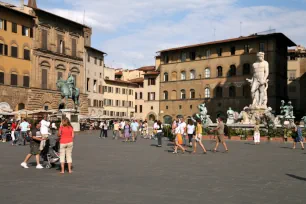
The origin of the square goes back to the thirteenth century, when the area was owned by the Uberti Family, at the time the most powerful family in Florence. The Uberti supported the Ghibellines (a pro-imperial faction) while their main opponents, the Buondelmonti family, supported the Guelphs (a pro-papal faction). The two parties tried to gain control for centuries, with the Ghibellines gaining the upper hand.
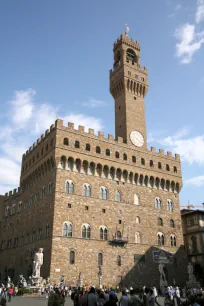
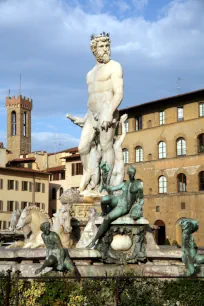
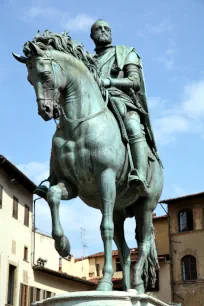
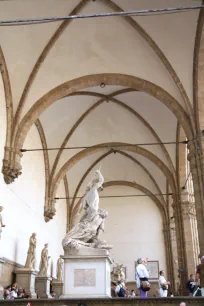
In 1266 however, after the defeat of the imperial army at the Battle of Benevento, the Guelphs expelled the Uberti family and all their properties were razed. As a symbol of victory, the rubble was not cleared for more than a decade, after which it became an open square. The Palazzo Vecchio and adjoining Uffizi were also built on the former property of the Uberti Family.
Palazzo Vecchio
Construction of a new building for the city council started at the end of the thirteenth century. Completed in 1322, it was originally known as the Palazzo Popolo (Palace of the People) but later renamed to Palazzo Vecchio (Old Palace). The presence of the palazzo gave the Piazza della Signoria a key role in the political history of Florence. From the fourteenth century on, Florentines gathered at the square for important political occasions and rulers often addressed the citizens from the Palazzo.
Statuary
While the square is not as large as some other Tuscan cities like Siena, it is very lively thanks to the many sights nearby. The square is almost an open air sculpture museum with plenty of statues that remind visitors of Florence’s glorious past.
The most famous statue on the square is Michelangelo’s David, one of the masterpieces of Renaissance sculpture. The statue was created in 1504 for the city of Florence and placed in front of the Palazzo Vecchio. In 1873 the statue was replaced by a replica, the original is now in the Galleria dell’Accademia.
In 1533 another statue was added to the square, Hercules, created by Baccio Bandinelli. Legend has it that Florence was built on swamps that were filled in by the mythical hero.
The Neptune Fountain was built between 1563 and 1575 and symbolizes Florence as a naval power. The design of Bartolomeo Ammannati shows the Roman god of the sea surrounded by sea nymphs.
The equestrian statue of Cosimo I de’ Medici, who brought the Medici family back to power in 1537, was commissioned by his son Ferdinando and created by Giambologna. It was installed at the Piazza della Signoria in 1594.
The Marzocco, a lion statue sculpted by Donatello in 1418-1420, was installed here much later, in 1812. The current statue is a replica, the original is now in the Bargello.
Loggia dei Lanzi
Even more statues can be found in the fourteenth-century Loggia dei Lanzi, an open gallery originally built to provide protection against natural elements during public meetings and events. In 1583 the roof of the loggia was converted into a terrace connected to the Uffizi Palace, which allowed the Medici to observe events and ceremonies held at the Piazza della Signoria from above.
- Next: Santa Croce
- More Sights & Attractions in Florence

